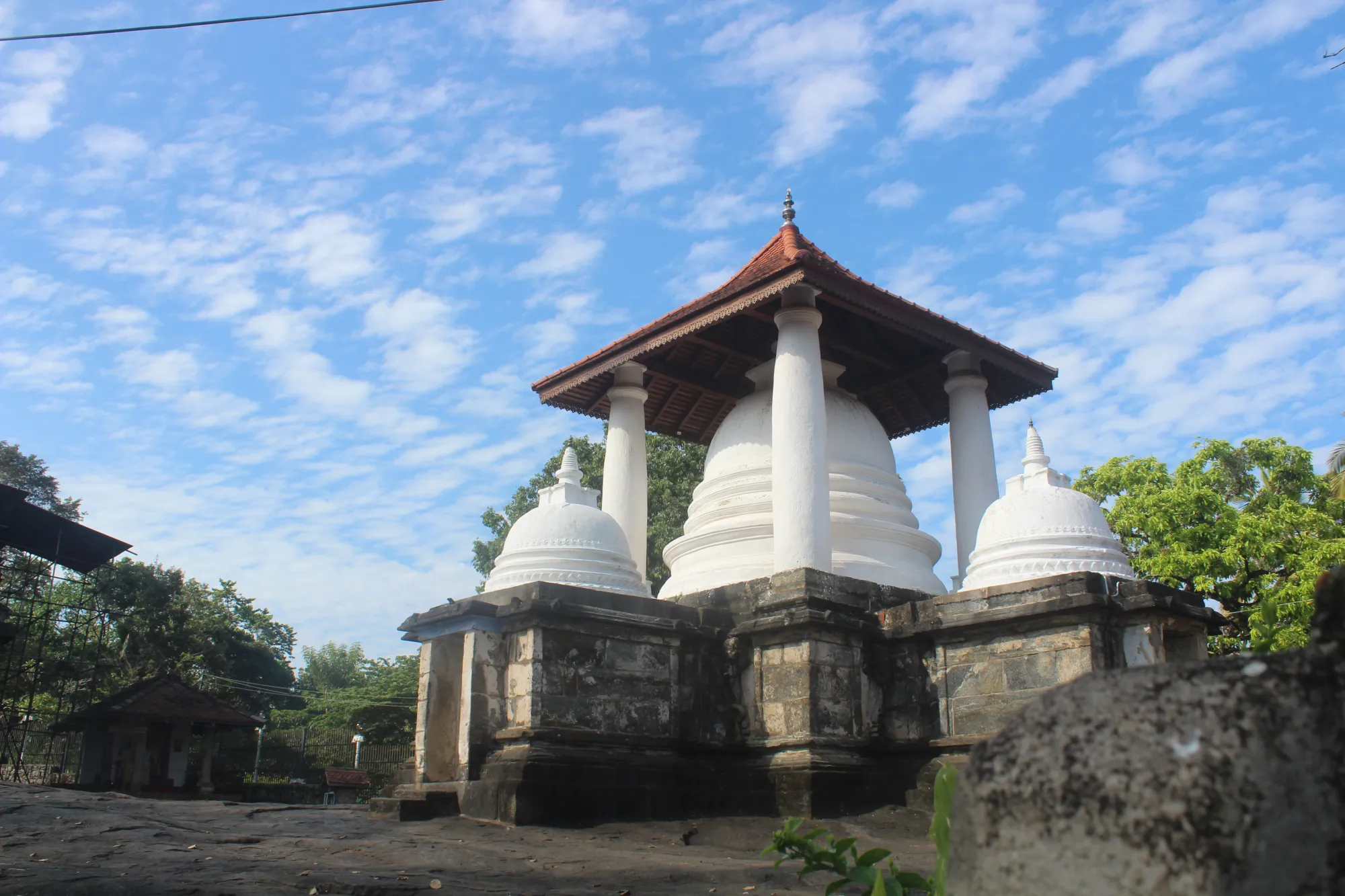
Gadaladeniya Temple
Gadaladeniya Temple, also known as Saddharmatilaka Vihara or Dharma Kirthi Viharaya, is an important historical site in Sri Lanka. Located in Kandy, it is a great place to visit if you are interested in history and architecture. In this travel guide, we'll go through all the important details you'll need to know when visiting this site.
Overview and Details
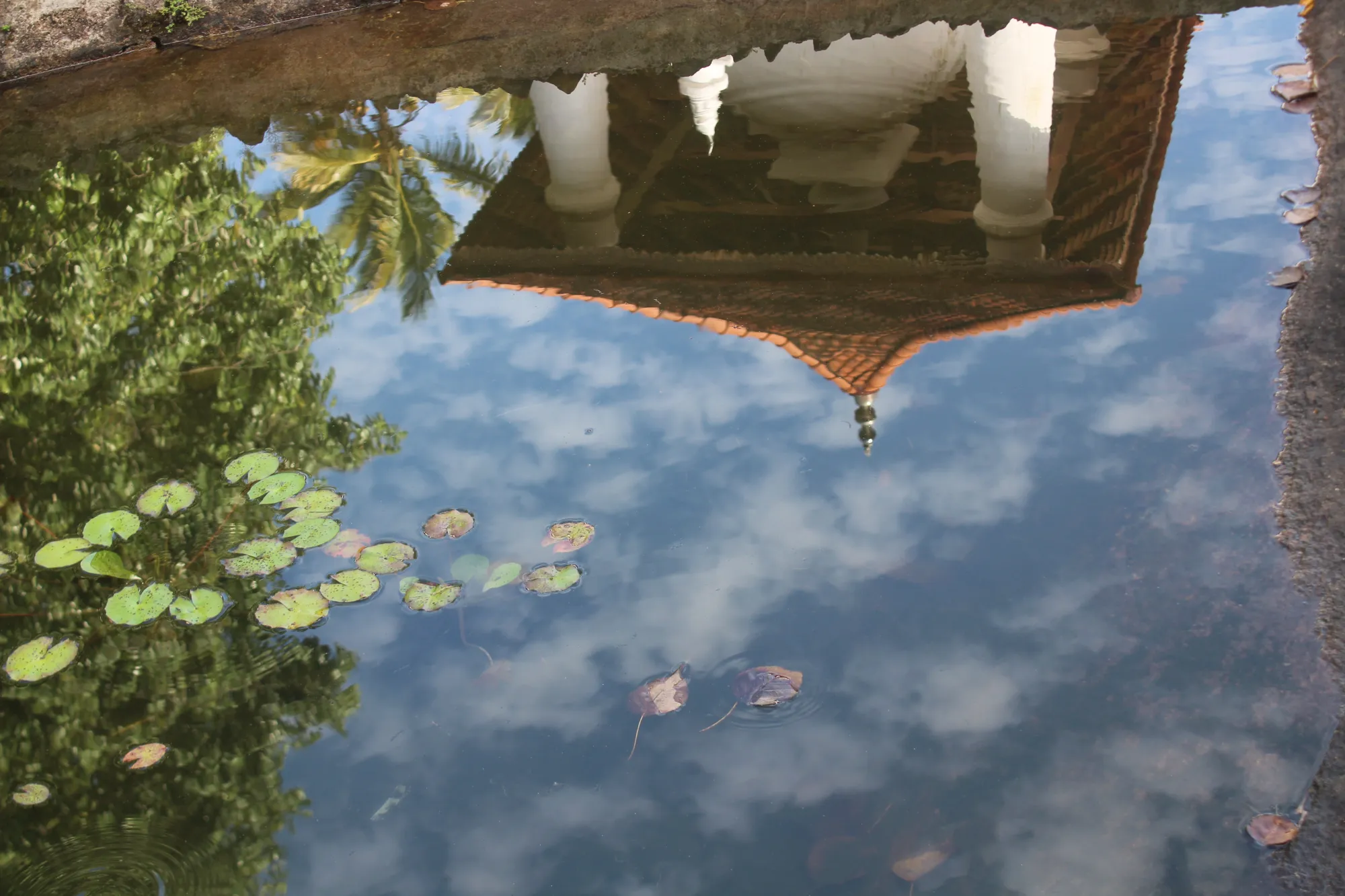
Gadaladeniya Temple, located in Pilimathalawa, Kandy, Sri Lanka, is a renowned Buddhist temple that dates back to the 14th century. The complex consists of a main shrine room with a seated Buddha statue, a large stupa surrounded by 4 smaller stupas, a 'Bo tree,' a small pond and several religious structures, all situated on a rock plateau.
Built primarily of stone and brick, the temple showcases a blend of Sinhalese and South Indian architectural styles, evident in its intricate stone carvings, layered stone roof, and unique Buddha statues.
The temple remains an active site for worship and spiritual activities, attracting both pilgrims and tourists interested in Sri Lankan history, architecture, and Buddhism.
Historical Background
Gadaladeniya Temple was constructed in the year 1344 during the Gampola period under the reign of King Bhuvanekabahu IV. The king sought to create a place of worship that would serve as a spiritual center, thus contributing to the spread of Buddhism in the region.
The chief architect, Ganesvarachari of South India and was a key figure in the design and construction of the temple. His influence brought in a blend of Dravidian and Sinhalese architectural elements, which made the temple unique.
The construction took place on the rock of Gadaladeniya, giving the temple its name. Originally, the temple was known as "Saddharmatilaka Vihara," which means "The Abode of the Gem of the True Doctrine." Later, it also gained the name "Dharma Kirthi Viharaya," named after a venerable monk who resided there. Over the centuries, the temple complex underwent several renovations and refurbishments, but much of its original architecture and artwork remain intact.
The temple also played a role in historical events. It was a meeting point for monks and scholars who contributed to the Theravada Buddhist tradition. Stone inscriptions at the temple provide valuable historical data about the period, including details about the king’s rule and the social conditions of the time.
Today, Gadaladeniya Temple stands as an enduring link to Sri Lanka’s past, offering insights into the country's history, art, and religion. It remains an important pilgrimage site and a living monument that continues to be a part of the religious fabric of the country.
Main Attractions and Architecture
The Stupa Complex
The stupa complex at Gadaladeniya Temple consists of one large stupa surrounded by four smaller stupas, built from brick and stone. It reflects the temple's architectural style that combines elements of Sinhalese and South Indian traditions. These stupas, with their dome-shaped bases and spire-like peaks, are key features of Buddhist architecture. Their construction technique, involving bricks and carefully shaped stones and intricate carvings, shows the advanced engineering and artistic skills of the period.
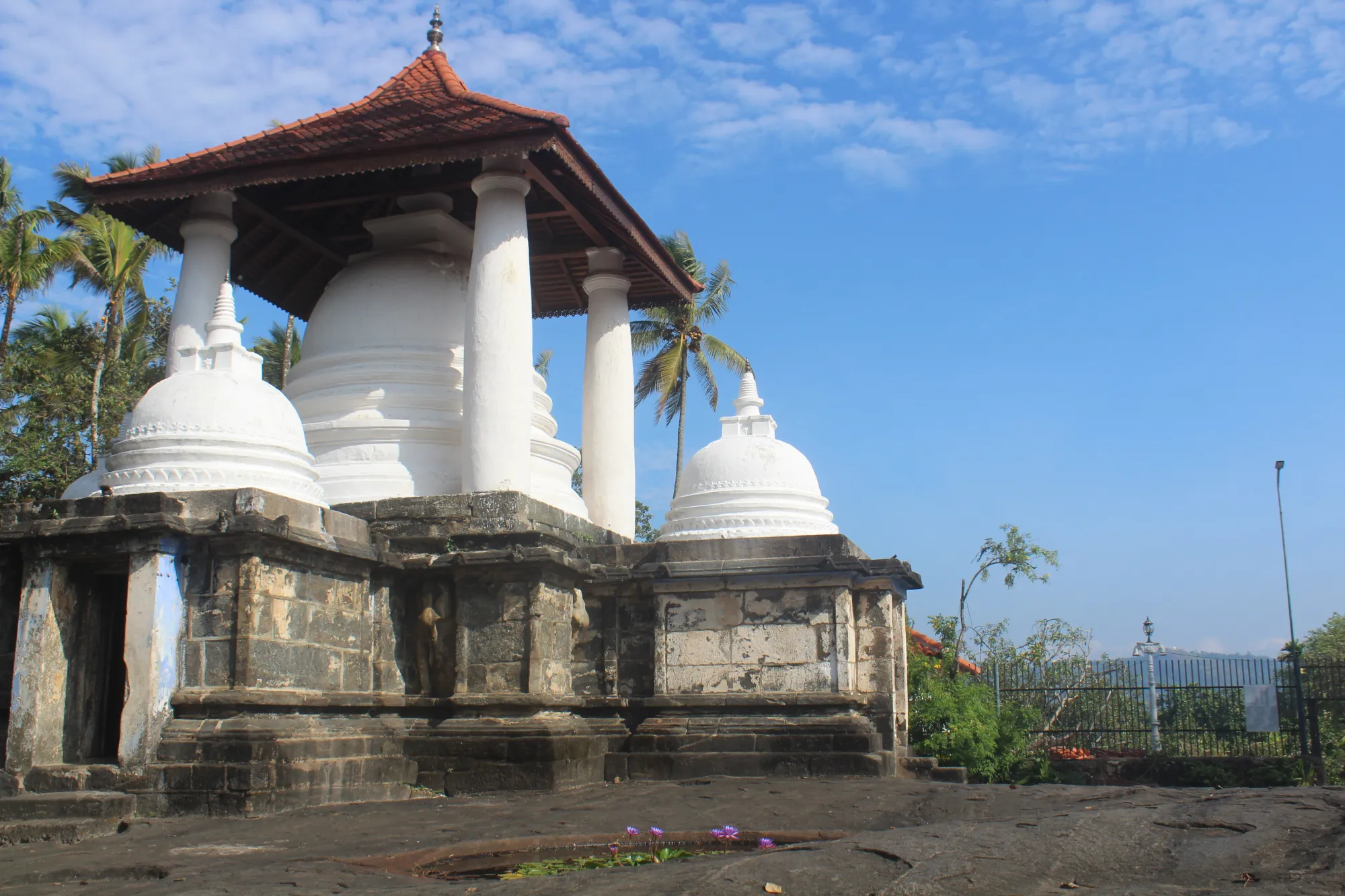
Places of Worship
The Gadaladeniya Temple complex has several shrines and places of worship, each offering a unique glimpse into the temple's rich religious heritage and architecture.
The Main Shrine
At the heart of Gadaladeniya Temple lies the Main Shrine. Built mainly from stone, this shrine houses a grand seated Buddha statue. It is also filled with carvings, paintings and objects of worship. The intricate carvings and the serene ambiance of the main shrine room serve as a focal point for devotion, drawing visitors and worshippers alike.
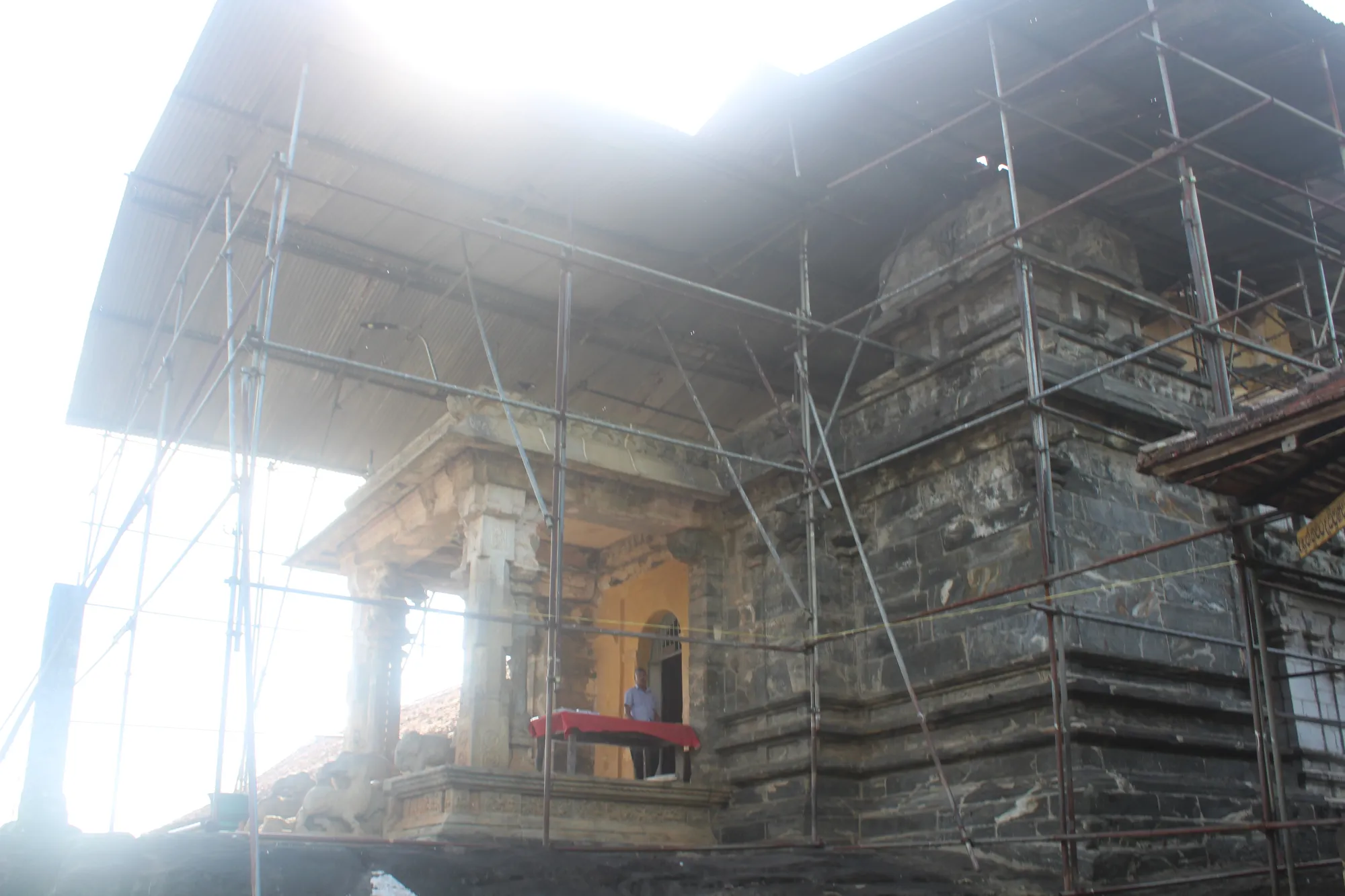
Bodhi Tree
There is also a Bodhi Tree along with altars for worship. It is a tranquil space dedicated to worship and meditation. Under the sprawling branches of the sacred Bodhi Tree, devotees engage in rituals of offering and lighting oil lamps. This area is a vibrant center of activity during full moon days, embodying the living connection between the temple's community and the enduring teachings of the Buddha.
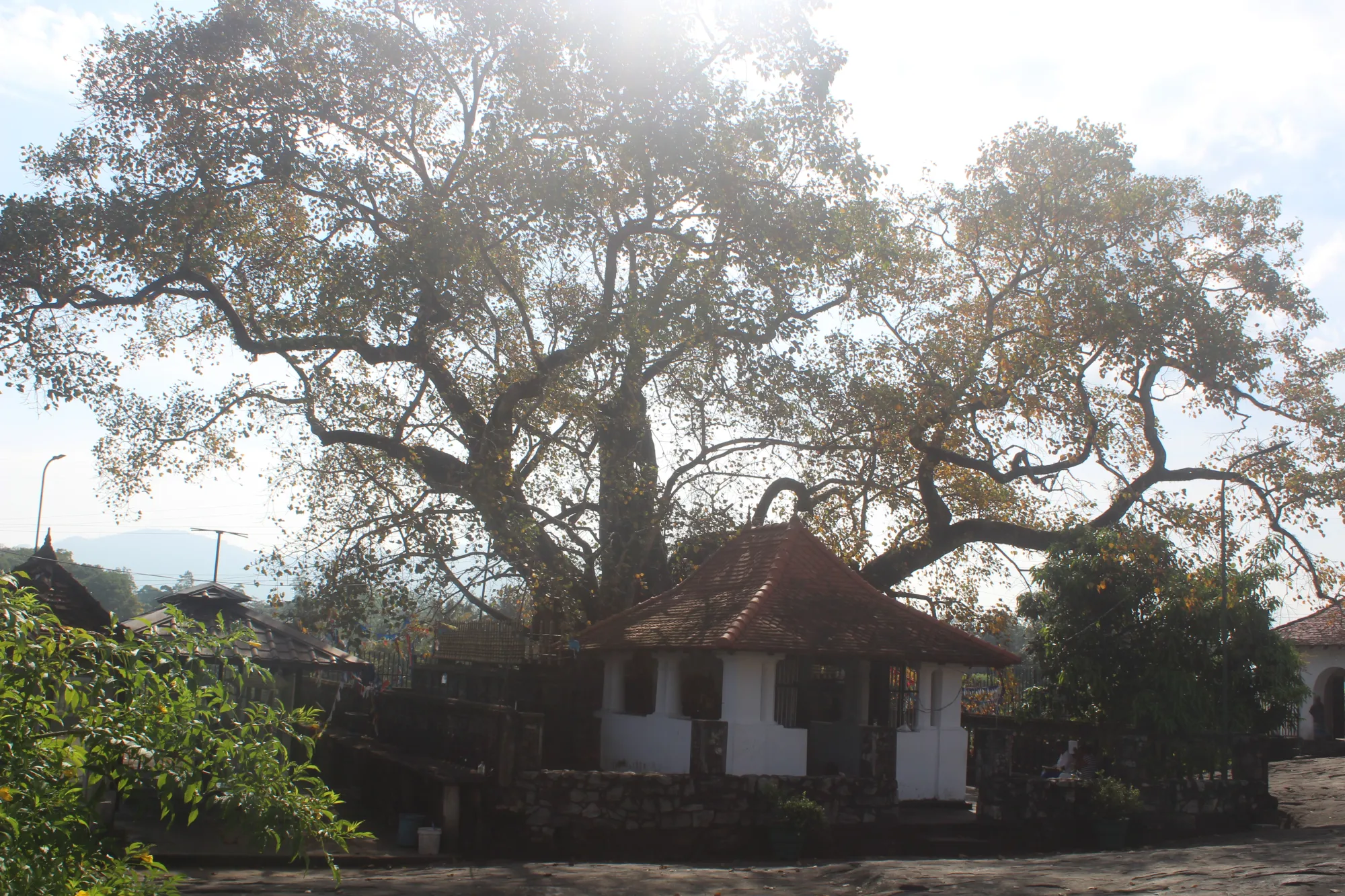
Dedimunda Devalaya
The Dedimunda Devalaya is another integral part of the temple complex, dedicated to the deity 'Dedimunda', revered by both Buddhists and Hindus. This shrine attracts devotees seeking protection and blessings. The Dedimunda Devalaya shows the intersection of Buddhist and Hindu religious practices within the temple's broader spiritual landscape.
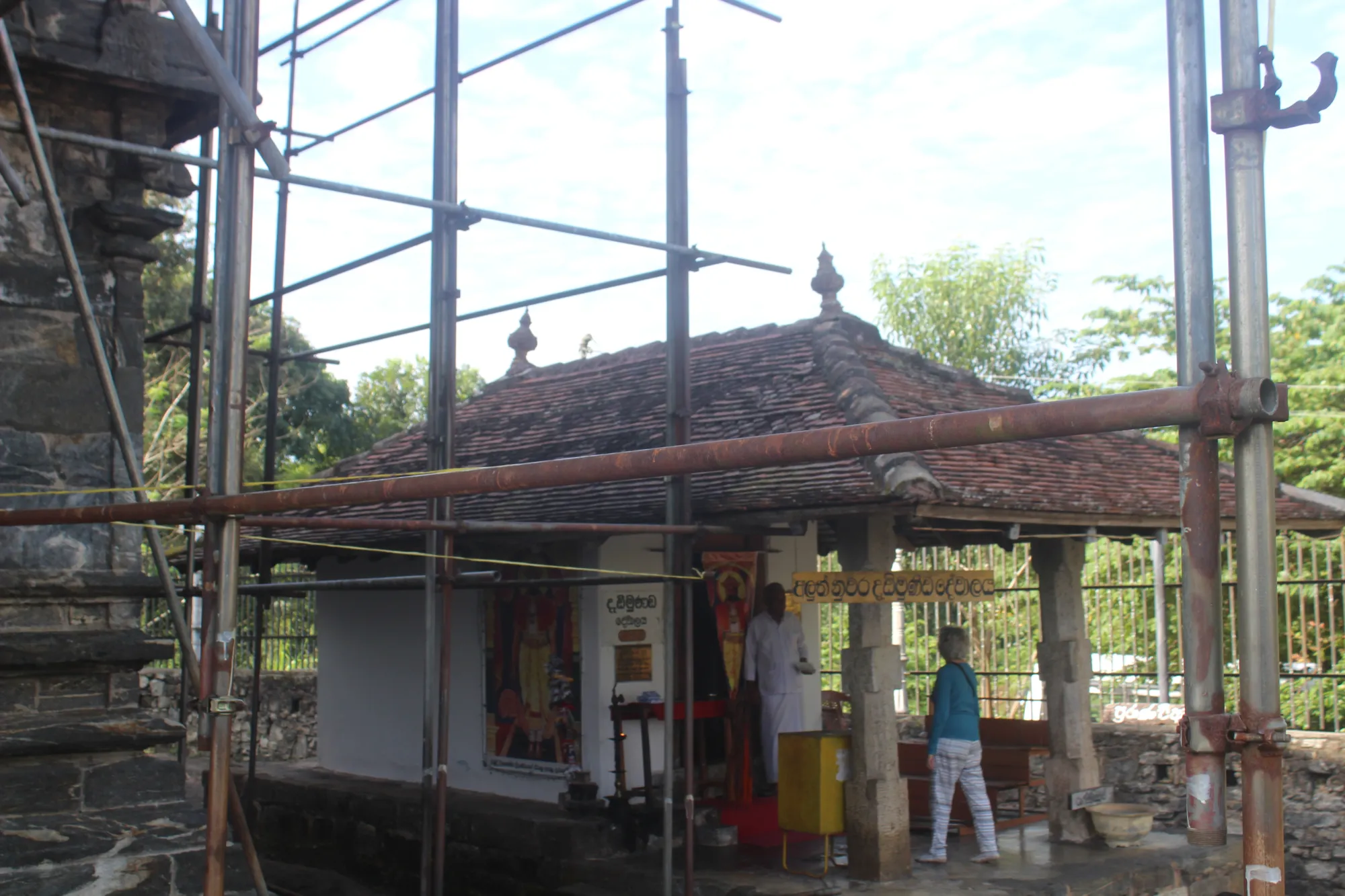
Stone Carvings and Inscriptions
The intricacy of the stone carvings at Gadaladeniya Temple is one of its most captivating features. These carvings are not merely ornamental but often contain inscriptions that provide historical context. Floral designs, traditional Sinhalese motifs, and images of deities are some of the types you will encounter.
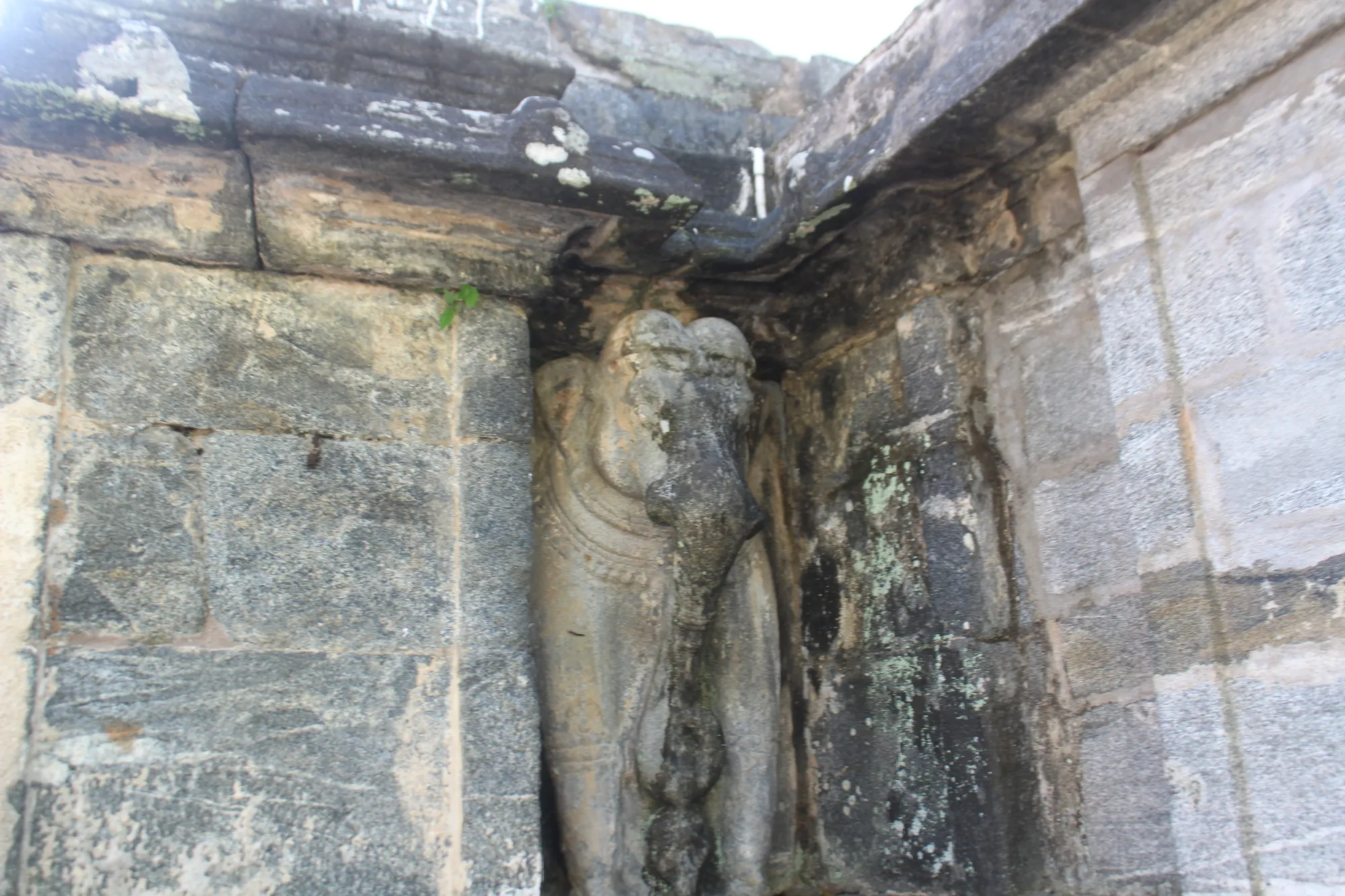
Layered Stone Roof
One of the unique architectural elements is the roof of the main shrine room, constructed using flat stones layered atop each other. Unlike many other Sri Lankan temples that employ wooden structures for the roof, the stone roof at Gadaladeniya is an exceptional feature. It demonstrates the advanced engineering skills of artisans during the period.
Buddha Statues and Iconography
The Buddha statues within the temple vary in size, posture, and style. The main Buddha statue is situated inside the shrine room and is much larger than the other statues. Several other Buddha statues are also located in various places around the temple and depict the Buddha in standing and reclining postures. These statues offer a glimpse into the different artistic styles prevalent during the temple’s history.
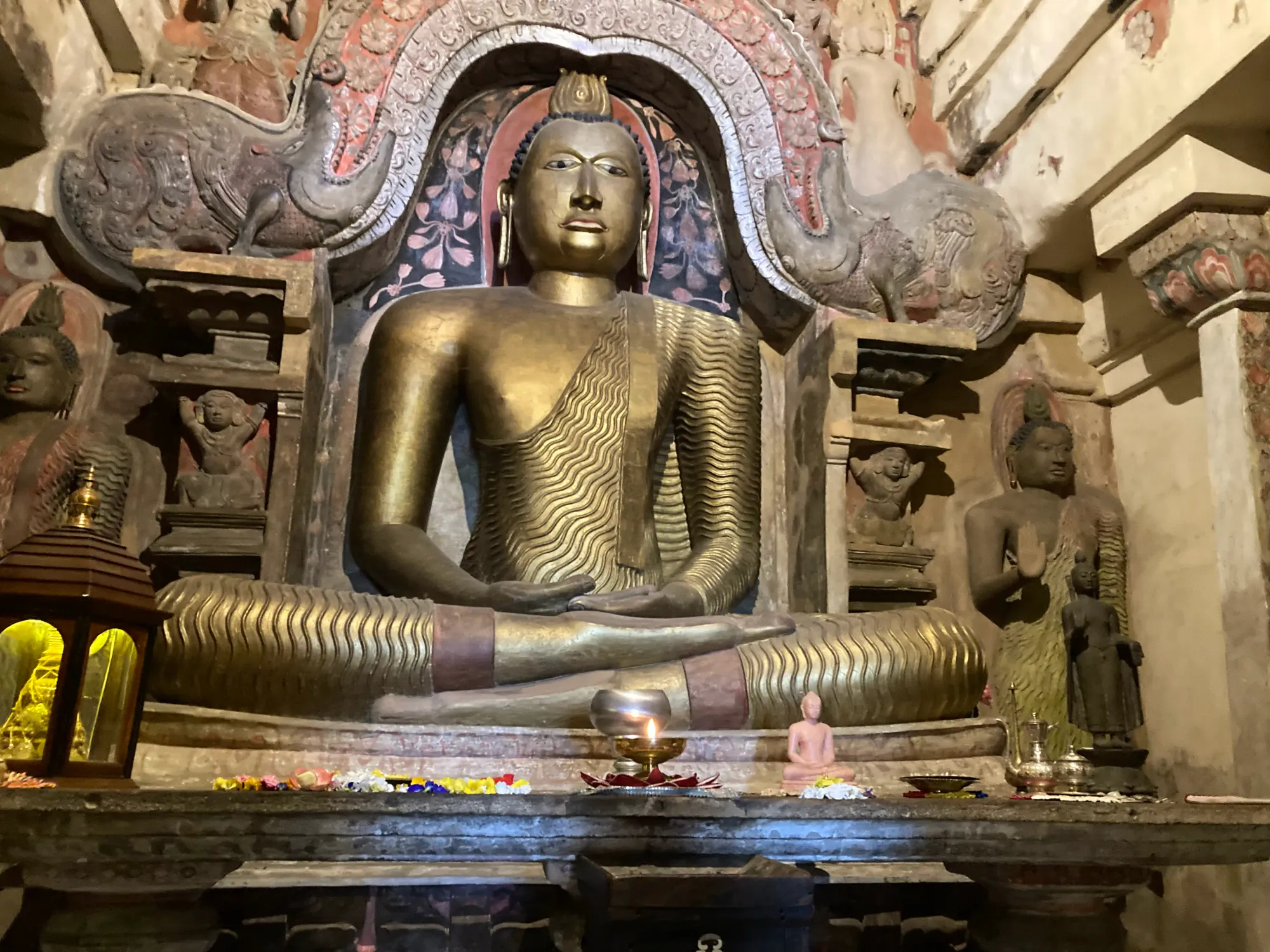
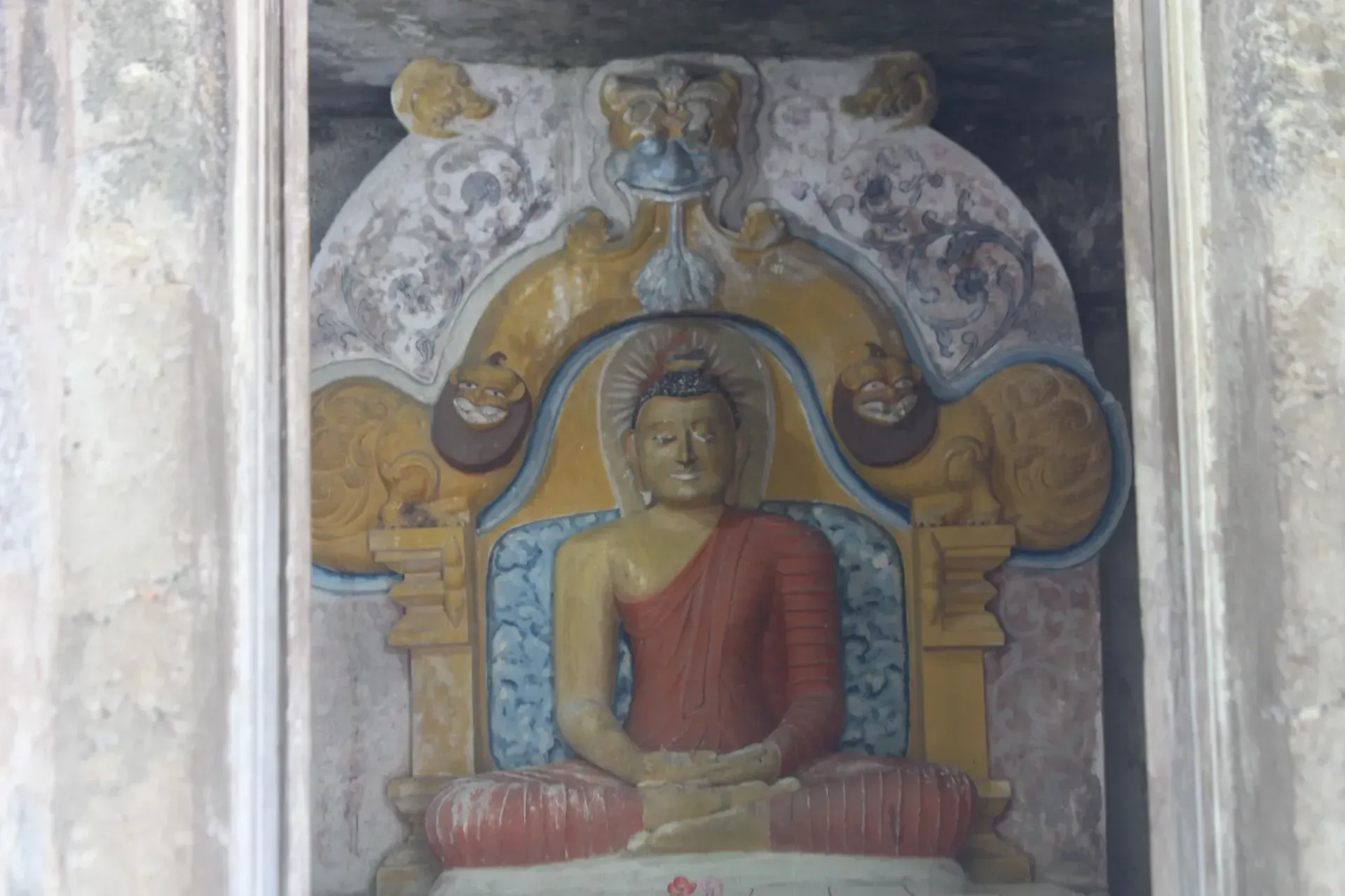
Paintings and Wall Art
The walls of the temple are adorned with paintings that depict various episodes from the 'Jataka' stories, which are stories from the Buddha's past lives. These paintings offer a rich visual narrative and are executed in the Kandyan style, which is characterized by bright colors and intricate details.
The Entrance and Pillars
The grand entrance to the temple is supported by tall stone pillars. Each pillar is individually carved with intricate designs that include both abstract patterns and representational images. The pillars not only serve as structural elements but also add to the aesthetic value of the temple.
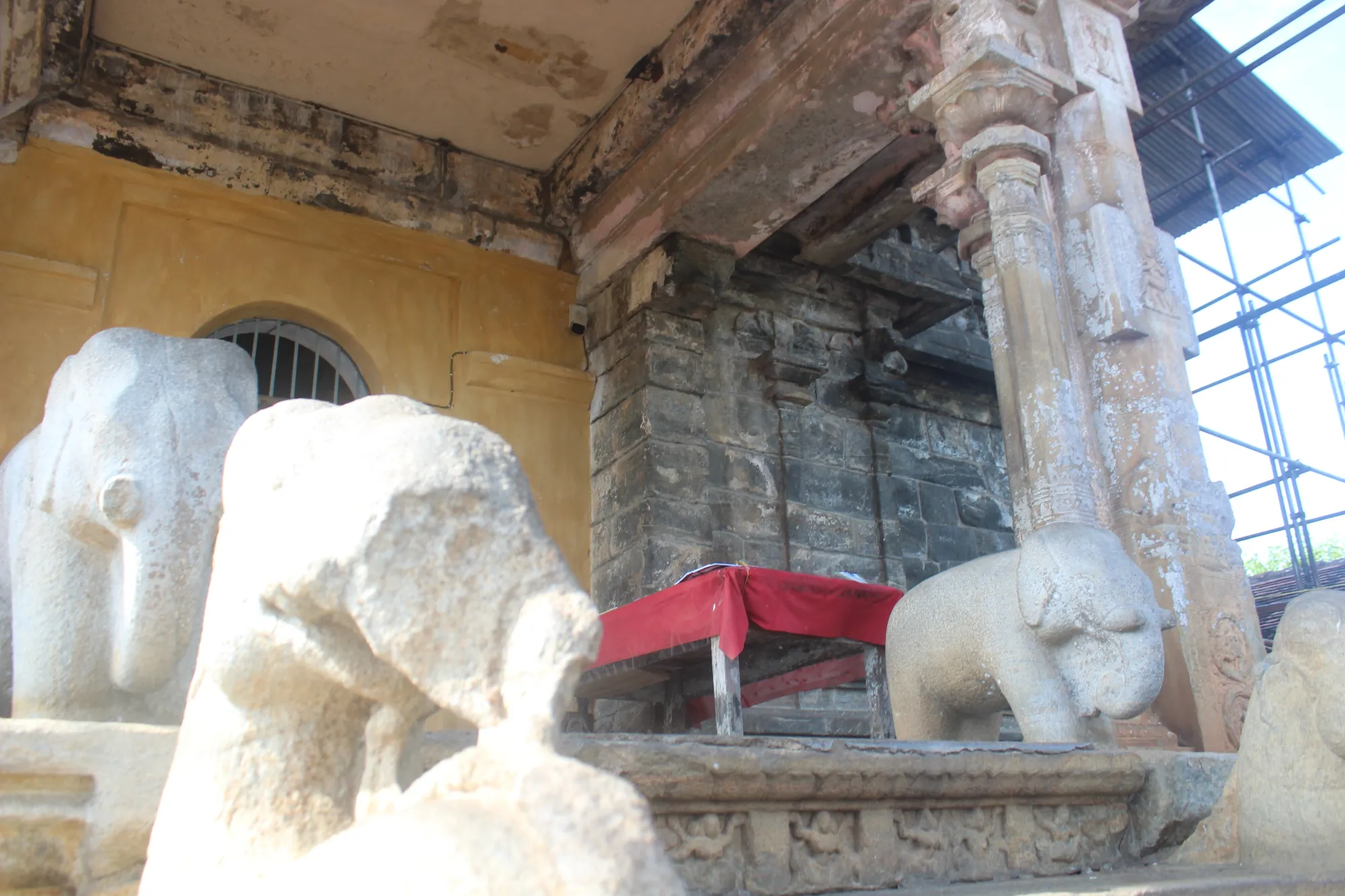
Makara Thorana and Pinnacle
Above the Buddha statue at the main shrine, you'll find an intricately carved arch known as the Makara Thorana. It is adorned with various traditional motifs, including a dragon and other mythical creatures. The pinnacle of the temple, also known as the "Kotha," is another notable feature. Made of stone, it resembles a miniature stupa and reflects the South Indian architectural influence.
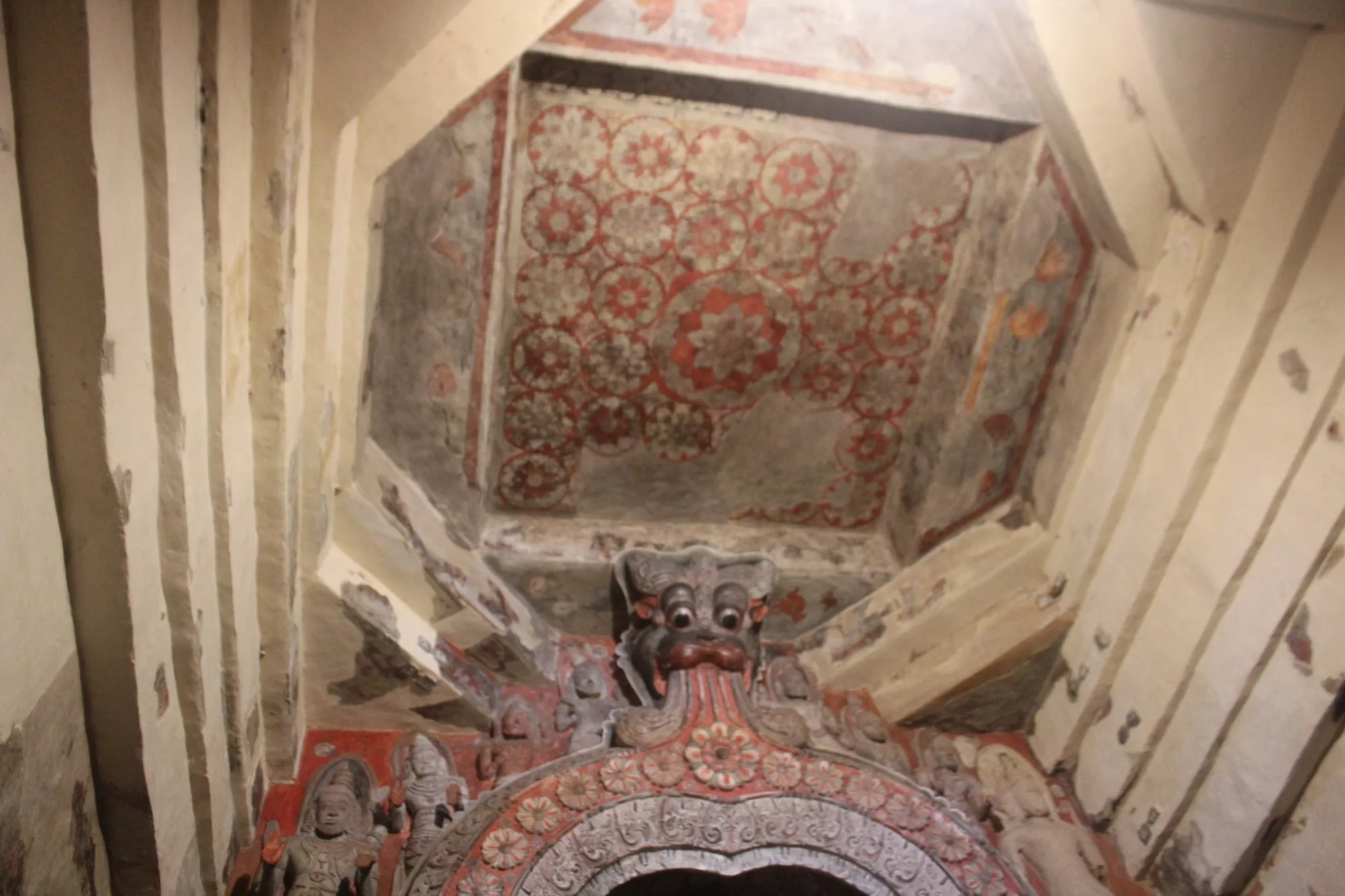
The blend of Sinhalese and Dravidian architectural elements makes Gadaladeniya Temple a unique structure. Its design details, from the stone carvings to the roof layers, reflect the advanced craftsmanship and diverse cultural influences of its time.
Religious and Cultural Significance
The temple holds a special place in the religious landscape of Sri Lanka. It is a site of pilgrimage, especially during the annual temple festival known as Perahera. This event draws crowds who come to witness processions, traditional dances, and rituals. Gadaladeniya Temple is also a place where many devotees come to meditate and seek spiritual guidance. It is also a fascinating place for tourists who are interested in Sri Lankan history and culture.
Location and How to Get There
If you are starting from Kandy, getting to Gadaladeniya Temple is straightforward. You can choose to drive, taking the Colombo-Kandy road towards Pilimathalawa, where the temple is well-signposted. Another option is to catch a bus from Kandy to Pilimathalawa. From there, you can hire a tuk-tuk.
Best Time to Visit
The ideal time to visit Gadaladeniya Temple is during the early morning or late afternoon to avoid the heat. The temple is open all year round. However, visiting during the Perahera festival provides an added cultural experience.
Tips and Advice
- Dress Code: Wear modest clothing that covers your shoulders and knees to show respect in this religious setting.
- Footwear: Remove your shoes before entering the temple premises as a sign of respect.
- Photography Rules: Be aware that photography might be restricted in certain areas. Always look for signs or ask for permission.
- Guided Tours: If you're interested in history and architecture, consider hiring a local guide for a more informed experience.
- Local Customs: Pay attention to local customs and practices, such as offering flowers at shrines, to engage with the site.
- Perahera Festival: If visiting during the annual Perahera festival, expect crowds and plan your visit accordingly.
- Accessibility: The temple is located on a rock plateau, so there may be steps and uneven ground.
Nearby Attractions
- Embekka Devalaya: Located approximately 10 km from Gadaladeniya Temple, Embekka Devalaya is renowned for its intricate wood carvings and historical significance.
- Lankatilaka Temple: This temple is another ancient structure near Gadaladeniya and is famous for its unique architectural style and panoramic views.
- Ambuluwawa Tower: Situated about 21km from Gadaladeniya Temple, Ambuluwawa Tower is a popular viewpoint and multireligious site in Sri Lanka. It is also situated in the middle of a stunning biodiversity complex.
- National Museum of Kandy: Located approximately 13 km from the temple, the National Museum of Kandy houses a rich collection of artifacts related to Sri Lankan history and culture.
- Peradeniya Botanical Gardens: Located about 8 km from the temple, this expansive garden is known for its diverse collection of plants, including a stunning orchid house. It's a perfect spot for nature lovers and those looking to relax in a serene setting.
Gadaladeniya Temple is a significant historical and religious landmark in Sri Lanka. The temple stands out for its rich history, unique architecture, and the deep cultural insights it offers. It's a spot that allows you to pause, learn, and reflect, making your trip to Sri Lanka a more fulfilling experience.
